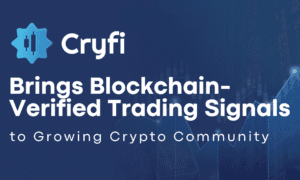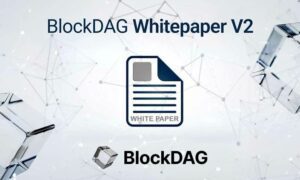How can we overcome the challenge of legacy systems, and embrace the future?
Shanty: During the past decade, fintech has revolutionized the payments industry, and incumbent merchant acquirers have been struggling to compete. What specific challenges do they face?
David: The critical challenge is legacy systems. Originally designed before the fintech era, when the needs of the customer—in this context a merchant—became paramount, such acquiring systems were intended to be used only by payment service providers, so they were minimalist in their approach to technical integration and user experience. This wasn’t an issue for the sophisticated PSPs who inserted themselves between the acquirer and their merchants, but it left the acquirer essentially unusable on a direct basis for most merchants, relegating them to a wholesale position that the fintech revolution has rendered increasingly unprofitable.
So why haven’t their legacy systems been replaced by now? The regulatory impediments faced by all financial institutions, and the conservative business culture this tends to foster, imposes significant friction on their IT operations. A lot is at stake for the bigger players, so they are reluctant to take the big technology risks that new entrants are more comfortable with because they have less to lose. Where any progress has been made by the incumbents, it has tended to be incremental, and therefore ultimately uncompetitive.
Shanty: E-commerce offers merchants unprecedented opportunities to sell their products and services cross-border. The nationally-oriented acquirers have been forced to globalize their offering, to compete with the likes of PayPal, Stripe, and Square. Why have these Silicon Valley innovators been so successful in challenging powerful incumbents with decades of experience in financial services?
David: We shouldn’t underestimate the magic of starting over with a blank slate and the benefit of hindsight. As information technology has matured, our ability to quickly create complex systems has accelerated, and this increasing leverage has been the key driver of the fintech transformation. Taking advantage of lessons learned during several decades of financial services and information technology, and applying an agile approach by a skilled and motivated product development team, it is now possible to quickly create from scratch a new acquiring system that outperforms legacy systems in every conceivable aspect, especially if a niche market can be targeted, which is usually the case in fintech.
Customer migration is a separate challenge. Just creating a better system is insufficient for an established acquirer to become competitive. Rather, they must ultimately make the better system available to all their existing customers, or those customers left behind will remain vulnerable to superior offerings from competitors. This is easier said than done, given the complex technical integrations needed in merchant acquiring, which impose a high inertia on most migration plans.
New market entrants face the relatively simple challenge of creating a better acquiring system, then making it available only to new customers, some of whom will be refugees from incumbent acquirers still struggling to upgrade or replace their uncompetitive legacy systems.
Shanty: You touched on the familiar stereotype of bright young software development teams using modern frameworks and agile processes to build awesome fintech solutions from scratch in record time. What makes it so challenging for an incumbent acquirer to achieve similar results?
David: This seems to be a common organizational phenomenon. I’ve never encountered a financial services business where the IT team didn’t already have a huge backlog of work burdening it—with competing software development priorities being a key source of management conflict—before making the risky decision to reengineer its core systems. Combine that with the additional bottlenecks of regulatory compliance and operational policies, and any innovation project tends to essentially grind to a halt before it makes any material progress.
Spawning an isolated innovation team, in the hope of bypassing this inertia, almost never works. No matter how much cool tech they develop, nor how quickly, it simply can’t be rolled out to customers or staff without regulatory compliance and operational buy-in from across the business.
A culture clash often emerges eventually, an us-and-them mentality, which doesn’t help matters. If management allows this mistrust to blossom into passive—or even active—resistance, then the mission is doomed. At this point, the team is usually disbanded. Some of them go back to fixing the stuff which is actually fixable. Others leave the company, perhaps to work in fintech, taking with them some lessons learned.
Shanty: Today, customers expect unified systems, streamlined APIs, and slick user interfaces. Given your critical account of the track record for insourcing, what practical options remain for an incumbent acquirer to compete?
David: You need to make an honest assessment of buying versus building. This is a matter of fully acknowledging your core competencies—and insurmountable limitations—and properly valuing time-to-market and continuous innovation. Financial services and software development are fundamentally different missions, and even the largest company can’t succeed by tackling everything internally.
Any purchased solution will have a number of gaps that need filling before it will work for your particular business. This is where you need to focus your scarce resources. Be wary of compromising on a patchwork solution, with parallel back ends or front ends that don’t fully interface. Instead, aim for a stack of complete technology layers, with all your staff and customers eventually using the same stack. That’s what you need to succeed, because that’s what your toughest competitors already have in place.
This full-stack goal means you need to take a modular approach, with an open mind. Think objectively about what is worth keeping, what needs enhancing, what must be replaced, and what should be added to the mix. Having proper integration points between all these modules is absolutely critical to building a common platform, so address that first in your project plan. Then lay out the rest of your plan in clear phases, each of which deliver real business value to staff or customers. This will help to secure and maintain everyone’s commitment to the initiative, even when things don’t go entirely according to plan, which is inevitable.
Shanty: What future developments do you foresee for merchant acquiring in the fintech era?
David: Firstly, the things that won’t change are customers’ expectations of near-perfect security, reliability, and performance. If these hygiene factors aren’t right, then they simply can’t trust you to power two critical aspects of their business—taking orders, and getting paid. This challenge isn’t new, and some would say that we as an industry used to do a better job at it. That’s because back then we didn’t change things so much, nor so often. The impressive innovation of fintech has come at the expense of some scary operational risk-taking.
What has mostly been changing, and will continue to change, is the breadth, depth, and seamlessness of the capabilities and interfaces offered to customers. They have been tolerating patchwork solutions, cumbersome technical integrations, and clumsy user experiences for years longer than they might have in another context, due to the generally poor market standard for acquiring, and the essential role of payments in their business. Better options are increasingly becoming available to customers, and if your offering isn’t one of them, then you face a serious retention and growth challenge. Once you have the hygiene factors under control, this needs to be your focus, if you want to become and remain competitive in the fintech era.
 David Jokinen has developed a global understanding of the payments space from his 25 years of experience in information technology, and 15 years in financial services. He played a leading role in product management and software development at Paysafe Group, as well as providing consultancy services to a number of fintech companies. At Dimebox, David leverages his broad skills and deep experience to guide the company’s product strategy, and manage its product delivery.
David Jokinen has developed a global understanding of the payments space from his 25 years of experience in information technology, and 15 years in financial services. He played a leading role in product management and software development at Paysafe Group, as well as providing consultancy services to a number of fintech companies. At Dimebox, David leverages his broad skills and deep experience to guide the company’s product strategy, and manage its product delivery.
https://www.linkedin.com/in/davidjokinen/
Shanty Elena van de Sande can be contacted via: www.elenavandesande.com



















































